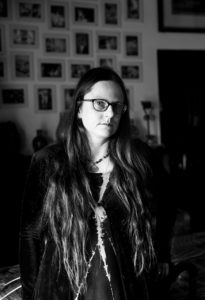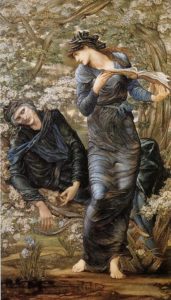It all started innocently enough about five or so years ago. A fellow author sent me a link to an article about the Book View Café, and we figured: why don’t we do something like this? By this stage many of us in our small circle of writerly folks were already rather jaded about the opportunities available in the industry””especially for those of us who live in far-flung places like South Africa where there isn’t a big market for SFF fiction. Some of us had already been agented, had sold novels to big publishing houses. Some of us were not making it out of the slush pile yet”¦ or were exhausted by all those full requests for submissions that simply vanished into a sticky silence. Added to that, some of us also had had unpleasant experiences with small presses going under, taking their back catalogue out of print. And a good handful were simply daunted by the war stories told by their author friends who’d already had a mad whirl on the merry-go-round of getting published and had their fingers burnt.
When we put our heads together, we realised that within our core group, we possessed all the skills and experience already garnered in the publishing industry so that if we helped each other, we could do the same, if not better, than a publishing company.
But then why not set up our own small press?
I can give you one word for that: Freedom.
Instead we envisioned a co-operative, very similar to the one described in the Book View Café post, and Skolion came into being.
Our vision for our co-operative is underpinned by that one small word: freedom. Anyone who’s had a book stuck in a bad contract will understand why that one little word is so important to authors who’ve had a raw deal. We desired a situation where authors wanting to go their separate ways did not have to untangle their titles from a contract. We are a small group that works on a handshake, so it goes without saying that mutual trust is also highly valued.
So, how do we make it work?
While the group is a voluntary association, three of us have agreed to take on management positions in terms of editing, administration, and marketing. We are also looking into setting up as a non-profit organisation at some point in the future, and to that end, we’ve gone as far as drawing up a constitution for our co-operative that sets out clear goals and how we operate. While we aim to be flexible, we also believe in clearly defining how our processes work. This helps to keep us on track.

The emphasis of our work as a co-operative is on quality, not quantity. These days, there’s an alarming trend of indie authors putting out a book a month. This often results in the minimum viable product falling into the hands of readers. And readers aren’t idiots. They know all too well when they hold an inferior product in their hands. We aim to avoid that. We recognise that a good book is a work of art that may require more than one set of hands and eyes to help shape it. And time. From within Skolion, we help each other by assessing each other’s work with care and diligence. We are attentive readers who love our chosen genres and know what to look for in terms of story-craft. Thereafter, a story will enter however many editing rounds as needed before it goes through to layout and formatting. And of course, the all-important proofing takes place as well.
We place emphasis that power lies primarily within the authors’ hands themselves. They get to make important decisions about how and when they want to publish, how they wish to set their prices. As a team, we stand behind them, help amplify their social media reach, provide encouragement and support. It’s a win-win situation.
But what about co-operative vs. traditional publishing?
So, the question people sometimes ask, are publishers even necessary in this day and age? The answer is simple: of course! Depending on the publisher, they can offer authors much in terms of reach, expertise, and marketing. Big publishers will have many resources upon which they can draw, be it an existing footprint in terms of marketing, access to professional editors, and of course print distribution (this last being where indie publishing often can’t compete.) Depending on the project, the right publisher will absolutely be the right option for an author. But these days, with many publishers being averse to risk-taking, it’s also safe to say that not all projects are suitable for a particular publisher. Hence the reason that many authors are embarking on hybrid careers that span the range of traditional and small press to self- or co-operative publishing. And it’s the latter that I believe marries up the best of both worlds when it comes to traditional and self-publishing. Skolion supports its authors when they have books that won’t quite suit the traditional publishing model.
Where to start, though? How can you set up your own co-operative?
A few years back I encountered an interview with a well-known film director who talked about collaboration, and about “˜making it’ in a tough industry. I also believe his advice is applicable to other creative industries. Now I’m going to paraphrase horribly, because for the life of me I can’t track down that particular interview. The basics were that authors should not glomp onto people who’re further up the feeding chain than they are. Don’t ride others’ coattails, in other words. Often enough, these luminaries in your chosen field already have their network set up, the people they’ve grown accustomed to working with on projects. And they’ll be busy. They’ll have many obligations. I can guarantee that.
I’m going to be brutally honest here. The chances of one of these public figures noticing you long enough to either give you a shout out that will have tangible impact on your career or even to give you a hand up are slim to none. These folks are where they are because they’ve worked hard, as should you. Now I’m no Neil Gaiman, I’m a freelancer, and I’ve got zero time to read someone’s story just to give an opinion. (And neither can Neil, I’m sure.) Unless you pay me. Then we can talk.
Instead of hanging onto your favourite celeb author hoping for morsels, create a network of authors and creatives who are in a similar space where you are. Sure, some may have a novel or two out already. Or a novel being submitted. Or even have a few they’ve self-published. The trick is to help each other, to create a semi-closed network of authors and creatives who are willing to help each other. And, most importantly, a close circle of authors who trust each other. This last is a vital ingredient in making a voluntary association of authors work well.
How does Skolion handle the publishing process?
At first, we spend time beta reading and proofing for each other, and we maintain a list of the various skills folks have to offer. Various members can handle tasks such as layout, design or formatting, and if for some reason we need to outsource, we have a list of preferred professionals. We constantly pick up tips from our fellow indie authors to find out who they’ve worked with in the past and use people who have a good reputation in our chosen genres and who understand what we need.
We also set up a schedule and decide between ourselves on a realistic publishing timeline. This way we prevent books from releasing in clumps. We assign tasks to people, such as beta reading, editing passes, layout and formatting, as well as coordinating any marketing initiatives to help promote new and existing releases. With any outsourced work, we’ve found it best if the author herself pays for any work that needs to be done, be it commissioning illustrations or cover design. As far as possible, we split any costs that might come up to be as fair as possible. These could be related to hosting a website, paying for the design and printing of pull-up banners or booking a table at a convention. If any issues come up, our committee will discuss the best course of action and then inform other members of the co-op, in order to find a solution that will fairly accommodate everyone.
Perhaps the most important qualities we’ve discovered are patience, teamwork, and a willingness to play the long game without egos getting in the way. We understand that in this game of making books, we are in the process of breathing life into people’s dreams. After all, it was other people’s dreams made concrete in the books and films we adore that brought us this far.
The Skolion authors’ co-operative has been active since 2016, and for us it’s the journey that matters. Our authors include myself, Amy Lee Burgess, Cat Hellisen, Cristy Zinn, Carrie Clevenger, Icy Sedgwick, Jenny Rainville, Laurie Janey, Masha du Toit, Stacey Reilander, Suzanne van Rooyen, Tallulah Lucy, Toby Bennett and Yolandie Horak. Since working within the co-operative, many of our authors have gone on to win literary awards, or at least make long- and shortlists. For us it’s about having that all-important buddy system that helps us ensure that our work is the best that it can be. Find out more about us at www.skolion.org
 BIO:Â Nerine Dorman is a South African author and editor of science fiction and fantasy currently living in Cape Town. Her novel Sing down the Stars won Gold for the Sanlam Prize for Youth Literature in 2019, and her YA fantasy novel Dragon Forged was a finalist in 2017. Her short story “On the Other Side of the Sea” (Omenana, 2017) was shortlisted for a 2018 Nommo award, and her novella The Firebird won a Nommo for “Best Novella” during 2019. She is the curator of the South African Horrorfest Bloody Parchment event and short story competition and is a founding member of the SFF authors’ co-operative Skolion, that has assisted authors such as Masha du Toit, Suzanne van Rooyen, Cristy Zinn and Cat Hellisen, among others, in their publishing endeavours.
BIO:Â Nerine Dorman is a South African author and editor of science fiction and fantasy currently living in Cape Town. Her novel Sing down the Stars won Gold for the Sanlam Prize for Youth Literature in 2019, and her YA fantasy novel Dragon Forged was a finalist in 2017. Her short story “On the Other Side of the Sea” (Omenana, 2017) was shortlisted for a 2018 Nommo award, and her novella The Firebird won a Nommo for “Best Novella” during 2019. She is the curator of the South African Horrorfest Bloody Parchment event and short story competition and is a founding member of the SFF authors’ co-operative Skolion, that has assisted authors such as Masha du Toit, Suzanne van Rooyen, Cristy Zinn and Cat Hellisen, among others, in their publishing endeavours.
If you’re an author or other fantasy and science fiction creative, and want to do a guest blog post, please check out the guest blog post guidelines. Or if you’re looking for community from other F&SF writers, sign up for the Rambo Academy for Wayward Writers Critclub!











One Response